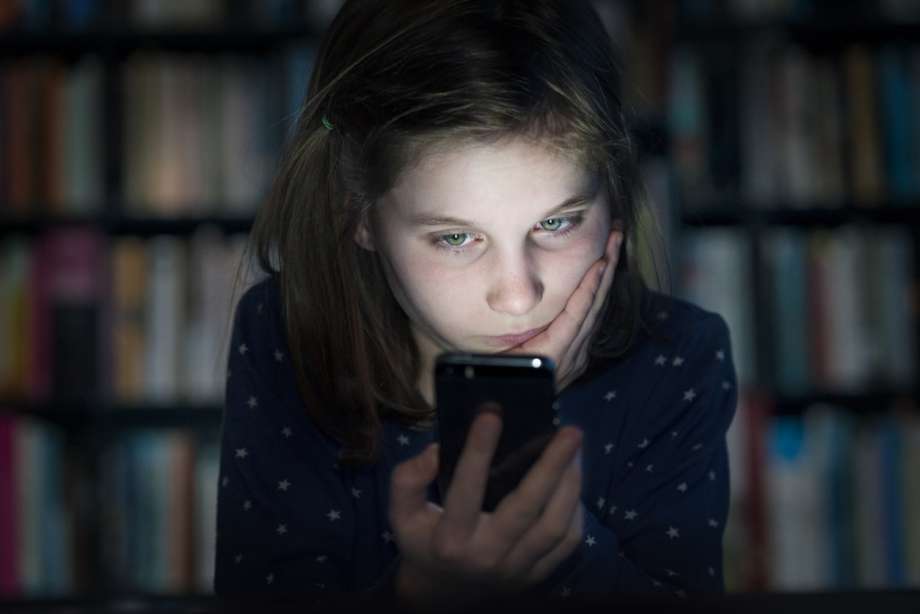Understanding Social Bullying and its Impact on Kids’ Mental Health

Gone are the days when playground bullies pulled ponytails and demanded lunch money. Social media has led to a new breed of bullying behavior that reaches far beyond the high school, middle school, or even elementary school walls.
From cyberbullying to physical bullying, we’ve got the info that today’s parents need to know about young people and the forms of social bullying.
Why Does Bullying Look Different for Today’s Kids?
Bullying is bullying. Right? Well, sort of. The school environment is and has always been a prime setting for bullying behaviors. But today’s kids don’t only have to deal with in-person school bullying. Instead, your kiddo may have to contend with cyberbullying, cyberstalking, and social media shaming.
Internet and social media use have skyrocketed in recent years. While in my day we passed folded hand-written notes during class, today’s teens take a more tech-savvy approach to socializing in school.
According to the Pew Research Center, 98% of American teens ages 15 through 17 and 91% of kids ages 13 to 14 use a smartphone. A whopping 72% have access to not only a smartphone but also a computer and a gaming system! 97% percent of teens claim they use the Internet daily—which probably isn’t much of a surprise for parents of high school kiddos. Pew’s stats also show that almost half (46%) of teens report using the Internet “almost constantly.”
While it’s nice to think these internet-loving tweens and teens are going online out of a thirst for knowledge, tech use is all about social media. One-third of teens say they spend too much time on social media, according to data from the Pew Research Center. And if you’re wondering what these super-social media users are doing, it isn’t liking family pics that Grandma posted on FB. Back in 2014-2015, Pew’s statistics showed that 71% of teens in the U.S. were avid Facebook users. By 2022 this number dropped to 32%. Instead, today’s tweens and teens prefer YouTube (95%) and TikTok (67%). While not as popular, nearly six in 10 teens use Instagram and SnapChat.
From the primary school playground to cell phones and apps—technology has made it easier for kids to bully others. Given the popularity of social media among tweens and teens, you can see how sites, platforms, and apps have become hot beds of shaming, stalking, intimidation, and other bullying behaviors.

What is Social Bullying?
Social bullying is a form of intimidation. The primary types of bullying include:
- Social bullying: As the name implies, this type of bullying focuses on relationships. AKA relational bullying. The social type of bullying behavior affects friendships, causes embarrassment, leads to feelings of isolation, and often results in rumors.
- Verbal bullying: Verbal bullying may intersect with social bullying. This type of behavior includes name-calling, teasing, taunting, inappropriate sexual comments, and threats of harm, according to Stopbullying.gov.
- Physical bullying: This type of bullying includes physical harm, such as hitting, kicking, or punching. It may also involve spitting on someone or tripping them.
While physical bullying may seem like the most painful type, social bullying’s impact on a child’s self-esteem can hurt just as much. Social bullying is not a new construct, and social media has made it easier for teens to bully others via the Internet and social media apps.
A social bully can use the Internet to almost instantaneously spread rumors or false information about a classmate or peer. They can also use social media platforms to influence other tweens/teens or turn one friend against another.
But the bullying doesn’t stop there. A social media bully may post photos or videos of events and activities that one child is not invited to. This type of post can alienate the person who was excluded from the event and make them feel even worse than they might already. The result is a feeling of isolation that can make the child feel friendless or seriously impact their self-esteem.
What Is Emotional Bullying?
Emotional bullying is a form of social and verbal abuse. An emotional bully uses words and social situations to intimidate someone or to get what they want. They may use tactics such as name-calling, mocking, direct threats, put-downs, or humiliation. They may also ignore or exclude their target.
As a combination of social and verbal bullying, emotional bullying creates an uneven power dynamic. It often uses aggression to cause emotional and mental stress or low self-esteem.
What Are the Common Types of Social Bullying?

Direct Social Bullying
Direct social bullying, or in-person bullying, is one type of bullying behavior that is often seen in school settings. This is the in-person verbal assault, the rumor mill in your child’s high school or middle school, or the bully who recruits a gang of “friends” to ignore their target.
Direct social bullies don’t let someone sit at their lunch table, mock someone else’s outfit during class, shout negative comments in the hallway, or create false narratives about former friends to get back at them. If these behaviors sound familiar, it’s because they’re more stereotypical “bullying.”
Cyber Social Bullying
With the rise in social media use among teens, cyber-social bullying is a serious problem that many tweens and teens face. By many, we mean almost half of all teens.
The Pew Research Center’s stats show that 46% of teens ages 13 to 17 have experienced at least one type of cyberbullying. In Pew’s survey, 32% of teens report being the victim of name-calling online or via a cell phone. 22% of teens have had a rumor spread about them online, 17% have received explicit images, 10% have been threatened physically, and 7% have had explicit images of themselves shared without their consent.
Cyberstalking and Harassment
Cyberstalking takes cyberbullying in a different direction. Instead of name-calling, sending images, or spreading rumors, cyberstalking is the tech version of the IRL action.
In-person or real-world stalking may include physically following someone, sending unwanted gifts/notes, monitoring someone else’s activities, calling someone else repeatedly, or even using other people to threaten the person. The cyber version doesn’t include the direct in-person following threat. But it does involve many of the elements of in-real-life stalking.
The cyberstalker turns relational aggression into an online threat. While the stalker can’t physically follow their victim online or via social media, they can track what the person does online, stalk their social channels, use fake profiles to follow or contact the person, send emails, text, or use a messaging app. A cyberstalker may also send unwanted explicit photos or DM’s.
What Impact Does Social Bullying Have On Mental Health?

Social bullying can profoundly affect a child’s mental health. The Stopbullying.gov website notes that teens who are bullied are more likely to experience depression, anxiety, feelings of loneliness, health complaints, loss of interest, poor academic achievement, and changes in sleep or eating patterns. Different types of bullying may cause different results. Social bullying that involves rumors may make a child extremely self-conscious and sad, while cyberstalking may make the teen anxious.
Bullying doesn’t only affect the victim. Bystanders who witness bullying may also have increased mental health problems. According to Stopbullying.gov, this could include depression and anxiety. The bystander effect could impact teens who witness social media bullying, are part of group chats that include rumors or name-calling, or know about the problem and don’t know what, if anything, they can do about it.
How Can You Talk To Your Child About Social Bullying?
Cyber or social bullying isn’t always easy to talk about with a child. But this doesn’t mean you shouldn’t try. And if you think you don’t need to worry that your child is bullied or is a bully, think again.
Even though you may try your hardest to monitor your tween or teen online, it’s possible they are using apps, messaging services, or social platforms that you aren’t aware of. A Pew Research Center survey found that 6 out of 10 parents worry about their teen being bullied online. The same percentage of parents also look through their child’s cell phone logs and check their web usage. If you have concerns about in-person or cyberbullying in a school setting, it’s time to have a candid conversation with your child.
Keep in mind, your child may not feel comfortable sharing embarrassing information with you. If you believe they are being bullied, let your child know that you are there for them and ready to listen. While you shouldn’t push or force your child to open up about their experiences, you also shouldn’t ignore bullying. Depression and anxiety won’t go away on their own and the feelings of isolation that social bullying causes can leave your child at a loss. If they won’t talk to you, bring in an expert. A therapist or your child’s school counselor can help your child and provide you with guidance.
Do you want to learn more about how to help your child stand up to bullies? We’ve got more info for you here!

